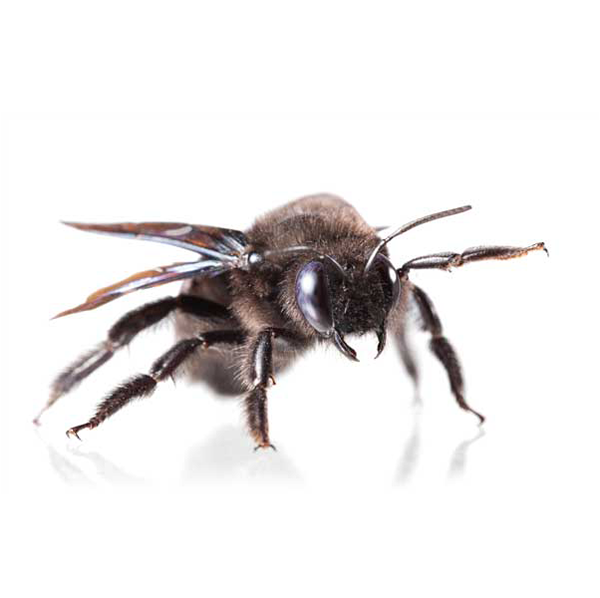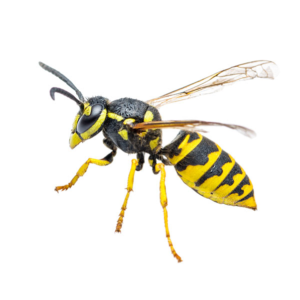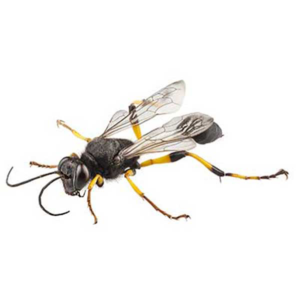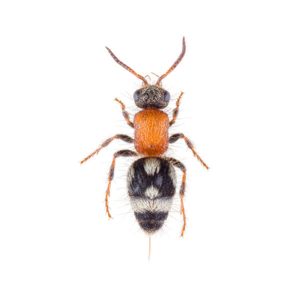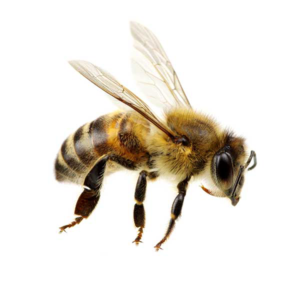Carpenter Bees in Salina
Aside from bumblebee queens, carpenter bees are the largest native bees in the United States. They get their name because they bore into wood, creating chambers to raise their young. Carpenter bees do not eat wood but cause damage to structures by excavating tunnels, particularly in lumber that is dry and weathered. Carpenter bees can be found across the United States, including right here in Salina.
Carpenter Bee Habitat
Carpenter bees are not social insects. They create individual nests in trees, eaves, or sides of structures. Males and females overwinter in old nest tunnels and emerge in spring to mate. The mated female selects a suitable piece of wood for nest construction and excavates a gallery using her mandibles. Once completed, she furnishes her nest with “bee bread” (a mixture of pollen and regurgitated nectar), deposits an egg, and closes the cell with chewed wood pulp. One of the telltale signs of a carpenter bee infestation is large amounts of sawdust and pollen on the ground.
Carpenter Bee Behaviors, Threats, or Dangers
Female carpenter bees are rarely aggressive but will sting if provoked. Anyone who is allergic to bee venom should seek immediate medical attention if stung. Male carpenter bees have no stinger but can be extremely defensive. Although carpenter bees can be helpful pollinators, they can cause major damage to wooden structures. Windowsills, wooden siding, decks, railings, outdoor furniture, and fences are all at risk. While damage by individual carpenter bees may not seem like a lot, it can certainly add up with numerous bees over many years.
If you suspect a carpenter bee infestation, we recommend contacting a bee control professional.

